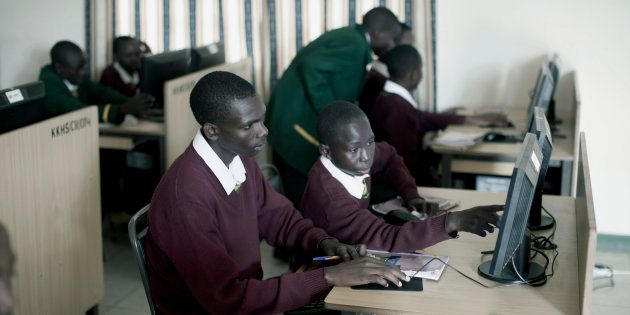
Headlines around the lack of service delivery in the country's public education system are not new, from school shutdowns to educators not being compensated and everything else in between. The reality behind them creates an infuriating sense of hopelessness amongst citizens, especially since these issues do not have a cut and dry solution.
However, there are measures that can be taken right now to help alleviate some of these problems. One of them is implementing technology into the classroom. This includes the use of computers, cellphones, apps, websites, video games, social media, etcetera as educational tools. Technology can not only combat the issue of lack of resources but it can give students the skills to survive and adapt in the workplace.
Technology improves the way students learn
"Children today are quite stimulated and technology allows educators to access and enhance the learner's mental prowess by stimulating different learning styles," says Gafieza Ismail, senior education specialist in e-learning for the West Coast education district.
During her tenure as an English teacher at Spine Road high school, Ismail embraced the use of technology to engage her learners. She used Powerpoint slides, Edmodo, Slideshare, Edpuzzle, Hot Potatoes, Powtoon, audio and video tools, YouTube and blogging platforms such as Wordpress and Edublogs to further enhance the way she taught. "As an educator, I have always ensured that I am innovative in the classroom. I believe that lessons should be relevant and emulate the world in which learners live," said Ismail.
A study conducted by Bitter and Legacy showed that integration of technology increases academic performance while simultaneously raising the standard of education in schools. The research also reveals that learners have higher comprehension scores after reading text through an electronic device versus reading from print. They concluded that students are more likely to retain more information and will be more engaged through visuals and animations offered by using technology.
Since including technology into the curriculum, Spine Road High has received an award for Most Improved in English Home language in 2013. The following year, the school had the highest average in English Home Language in Mitchells Plain and attained the first 100 percent pass rate for Grade 12 in the region. "I have had learners with an average of 60 percent English Home Language throughout high school, achieve 80 percent to 95 percent in Matric. Learners who had previously repeated grade 11 due to their English results received bachelor's and above in their final matric year," said Ismail.
Another study by Sharples, Taylor and Vavoula revealed that using mobile devices can "facilitate knowledge-centred learning by providing efficient and inventive methods to which students can learn with understanding – meaning that they deepen their understanding of a specific subject matter than merely memorising large amounts of information". Kopano Ntsoane, a programmer and CEO of Modern Gaming agrees with this sentiment. As a developer, Ntsoane has recognised how gaming content can be used an educational tool. He has created the Basic Block Programme for kids aged five to 15.
It uses the allure of video games to help kids in township communities gain skills in design, computer sciences, animation and programming while improving their language capabilities. "I felt the need to expose them (children) to software development and entrepreneurial opportunities from a young age," said Ntsoane. 'With our programme, these children are more aware and intrigued with the content because it is presented in a different context."
Implementing e-learning programmes in South Africa easier said than done
It's clear that using technology in the classroom has its benefits. But considering the struggles that South Africa faces with access to basic services and resources, is it viable in poorer communities? The simple answer is yes. Those living in rural or remote areas could turn to mobile phone-facilitated learning. Researchers Lya Visser and Paul West investigated how technology can facilitate distance learning in developing countries and concluded that "mobile technology is much less cost-prohibitive than other technologies like personal computers and broadband connections that are necessary for eLearning.
"Mobile technology represents an important avenue by which to reduce the gap between the haves and the have-nots in contemporary society where access to knowledge and information is increasingly important." Phuti Ragophala, former principal at the Pula Madibogo primary and Global Teacher Top-50 candidate has used mobile devices to connect with students. As an ambassador for the Kakuma project, Ragophala has been able to communicate with students in Kenyan refugee camps using cellphones. WhatsApp has become a tool to provide lessons to children who are affected by war and civil unrest.
Ragophala also engages with students from different countries - Austria, India and the United States - using various platforms such as Skype and social media to facilitate learning. "The classroom has limitations. The tried and tested chalk and board method should give way to a classroom loaded with gadgets as we are in the digital age," says Ragophala. "People are already using it in everyday life, why not use it in the classroom?"
South Africa can provide high-class education but it needs to embrace the use modern devices inside and outside the classroom to reach its potential. Technology is not going to fix everything and it comes with its own challenges. But, South Africa is not in a position not to try.
